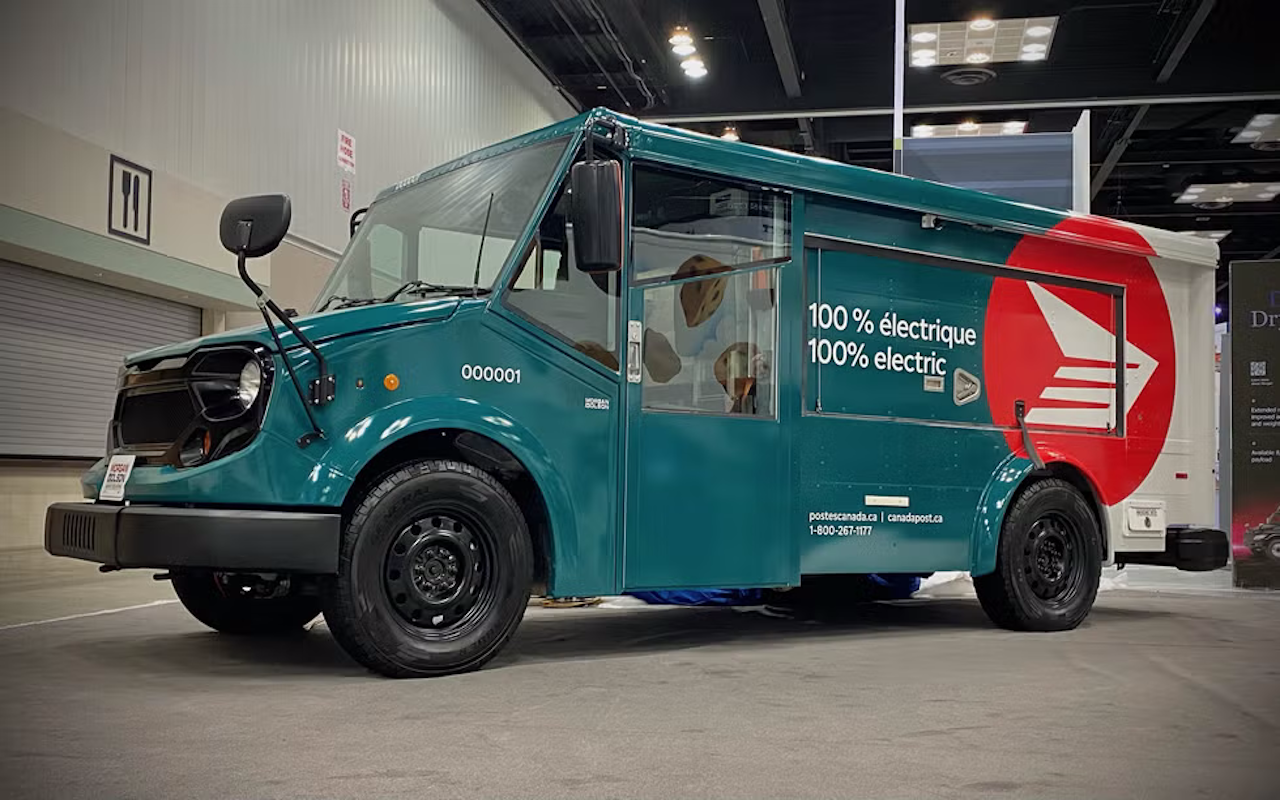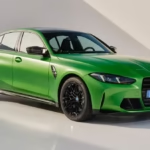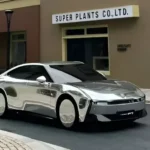The ongoing effort to modernize the United States Postal Service (USPS) fleet has reached a significant turning point. A recent ruling by the U.S. Senate parliamentarian,
Elizabeth MacDonough, has dramatically altered the political landscape surrounding the USPS’s ambitious electric vehicle (EV) program. This decision effectively makes it substantially harder for Congress to scrap the existing USPS EV plans, a move that had been a key objective for some Republican factions. The implications of this ruling are far-reaching, ensuring that the momentum towards an electrified postal service continues to build.
Currently, the USPS has already made substantial investments, with 7,200 EVs integrated into its fleet and approximately $500 million allocated and spent on critical charging infrastructure. This considerable financial commitment underscores the agency’s dedication to its modernization goals. While a tax and spending bill before Congress had sought to overturn the electrification mandate established under the Biden administration, MacDonough’s ruling now demands a supermajority vote to reverse these existing plans.
This legal barrier is a significant win for proponents of the EV transition, solidifying the future of electric mail delivery and ensuring that the much-needed modernization of the USPS fleet can proceed with greater certainty. The move promises improved efficiency, reduced environmental impact, and a better working environment for mail carriers across the nation.
The New Fleet: Modernizing Mail Delivery
The core of the USPS’s modernization effort lies in its new vehicles, which represent a significant upgrade in terms of technology, safety, and efficiency.
Introducing the Oshkosh Next Generation Delivery Vehicle (NGDV)
The most visible symbol of the USPS fleet modernization is the Oshkosh Next Generation Delivery Vehicle (NGDV). These new mail trucks, while having a somewhat “polarizing styling” that has been likened to “background traffic in a Pixar film,” are designed with significant practical improvements. Their distinctive appearance belies their advanced capabilities. Crucially, these vehicles represent a “huge improvement for comfort and safety” compared to the antiquated fleet they are replacing. This upgrade is not merely aesthetic; it addresses long-standing concerns from mail carriers regarding their daily working conditions.
The original Grumman LLV (Long Life Vehicle) delivery vans, which have been the backbone of the USPS fleet for decades, were an improvement over the “buckboard Jeep DJs” they replaced, but that replacement itself dates back to the 1970s. This highlights the immense age and technological obsolescence of the outgoing fleet. The LLVs are notoriously hot in summer, lack modern safety features, and are generally hard on carriers.
In stark contrast, the Oshkosh NGDVs are equipped with contemporary safety standards, including features like airbags, improved visibility, and ergonomic designs that are “already beloved by mail carriers.” These improvements aim to provide a safer and more comfortable environment for the dedicated individuals who deliver mail daily, recognizing that their well-being is paramount. The NGDVs are available in both internal combustion engine (ICE) and battery-electric vehicle (BEV) models, offering flexibility during the transition phase.
Fleet Composition and Future Plans
The current composition and future trajectory of the USPS fleet replacement plan are designed to systematically transition towards a more electrified and efficient operation. Out of the vast USPS fleet of 160,000 delivery vehicles, the replacement process is currently moving forward with a near 50/50 split between EVs and combustion-powered machines. This balanced approach allows for a gradual integration of new technologies while ensuring operational continuity. The current fleet already boasts 7,200 EVs in service, demonstrating the initial progress made on the ground.
The Biden administration’s initial mandate laid out ambitious provisions, aiming for a minimum of 45,000 electric delivery vans. On top of this, an additional 10,000 Ford E-Transit vans have been ordered, further diversifying the types of EVs being integrated. This multipronged approach ensures that the USPS utilizes a range of vehicles best suited for various routes and operational needs. Looking ahead, the plans are even more aggressive: by next year, the replacements for the old fleet are projected to be entirely EVs.
This accelerated timeline underscores a strong commitment to achieving a fully modernized and largely electric delivery system, ultimately aiming for 66,000 EVs by 2028. This comprehensive strategy positions the USPS as a leader in large-scale fleet electrification within the federal government, significantly reducing its environmental footprint and operational costs in the long term.
Why Electric Makes Sense for Mail Delivery
The unique operational characteristics of mail delivery routes make them particularly well-suited for electric vehicle adoption, offering numerous practical and environmental advantages.
Optimized Routes and Regenerative Braking
Politics aside, the electrification of mail delivery fleets stands out as one of the “more easily planned fleet rollouts” for electric vehicles. This inherent suitability stems from the predictable nature of mail carrier routes. Unlike emergency service vehicles such as fire trucks or ambulances, which operate in particular areas but do not have set, repetitive routes, a mail carrier van runs the same path several times a week. This consistent and predictable operational pattern is a significant advantage for EV deployment.
Fleet managers can meticulously plot out service, charging times, and energy requirements for each vehicle, optimizing efficiency and ensuring that vehicles have sufficient range for their daily duties.
Furthermore, the very nature of mail delivery involves frequent stops and starts. This characteristic, which can be taxing on traditional combustion engines and braking systems, is a significant benefit for electric vehicles due to battery regeneration. Every time a mail carrier slows down or stops, the EV’s regenerative braking system converts kinetic energy back into electrical energy, which is then stored in the battery.
This process effectively saves wear on conventional brakes, extending their lifespan and reducing maintenance costs. More importantly, it recharges the battery incrementally throughout the day, maximizing the vehicle’s operational range and reducing the reliance on external charging infrastructure during the route. This efficiency makes EVs an ideal solution for the stop-and-go demands of mail delivery, offering both operational and economic advantages over gasoline-powered vehicles.
Environmental and Economic Benefits
The transition to an electric USPS fleet offers substantial environmental and economic benefits. From an environmental perspective, EVs produce zero tailpipe emissions, directly contributing to cleaner air in communities across the country. This reduction in local air pollution is particularly significant in urban and suburban areas where postal vehicles operate daily. While the electricity used to charge EVs may come from various sources, the overall emissions footprint is generally lower and can further decrease as the national grid incorporates more renewable energy sources. This aligns with broader federal climate goals and commitments to sustainability.
Economically, EVs promise significant long-term savings for the USPS. Reduced reliance on fluctuating gasoline prices offers greater budget predictability and stability. Furthermore, electric vehicles typically have lower maintenance costs compared to their internal combustion counterparts. They have fewer moving parts, no oil changes, and reduced wear on components like brakes (due to regenerative braking). These combined factors translate into millions of dollars in annual savings for the Postal Service.
These cost reductions can then be reinvested into other areas of postal operations, improving service delivery and efficiency. The move also shields the USPS from future volatility in fuel markets, securing its financial future in a more sustainable manner. This comprehensive benefit package makes the electrification not just an environmental imperative but a shrewd long-term economic strategy.
The Ruling’s Impact and Future Outlook
The recent Senate parliamentarian’s ruling has solidified the USPS’s EV program, creating a more certain path forward despite political opposition.
Supermajority Requirement: A Game Changer
The recent ruling by the U.S. Senate parliamentarian, Elizabeth MacDonough, represents a pivotal moment for the USPS’s EV plans. By declaring that a supermajority vote would be required to scrap existing EVs and their associated charging infrastructure, MacDonough has significantly elevated the legislative hurdle for opponents of the program. A supermajority, typically 60 votes in the 100-member Senate, is notoriously difficult to achieve, particularly in a politically polarized environment. This ruling essentially makes it much harder for Congress to overturn the electrification mandate that was set under the Biden administration.
Prior to this decision, Republicans had been hoping to scrap the program through a simple majority vote, potentially leveraging a tax and spending bill. The parliamentarian’s interpretation ensures that any such attempt will now require bipartisan support, which is unlikely given the current political climate surrounding climate initiatives and government spending.
This legal protection safeguards the substantial investment the USPS has already made – 7,200 EVs purchased and $500 million spent on charging infrastructure. Without the threat of an easy legislative reversal, the USPS fleet replacement rules will likely generate further legislation around timelines and implementation, shifting the debate from cancellation to optimization. This ruling effectively cements the electrification program, allowing the USPS to continue its modernization efforts with greater confidence and stability.
The Cost of Reversal and Inevitable Modernization
The USPS itself has strongly articulated the financial repercussions of any attempt to halt or reverse its electrification program. The agency points out that simply canceling existing contracts, mothballing already purchased vehicles, and ripping up newly installed charging infrastructure would create “considerable waste.” Their estimates indicate that such a reversal would lead to an estimated $1.5 billion lost.
This significant financial loss would stem from various factors, including breach-of-contract penalties, the depreciated value of already purchased EVs, and the sunk costs of infrastructure development. This economic argument further strengthens the case against abandoning the current EV strategy, highlighting the fiscal irresponsibility of such a move.
Meanwhile, the era of the Grumman LLV simply cannot persist. These aging vans are not just an aesthetic curiosity; they pose serious operational and safety challenges. Especially during the hot summer months, the vans are notoriously “too hot,” creating uncomfortable and potentially unhealthy working conditions for mail carriers. Their design, based on 1970s safety standards, means they lack crucial modern safety features, exposing carriers to unnecessary risks.
Whether the future fleet is comprised of pure battery EV, hybrid, or small-displacement combustion power, the fundamental need for modernization is undeniable. As the old adage goes, “neither rain nor heat nor gloom of night nor political wrangling will stay the USPS fleet from its much needed modernization.” The parliamentarian’s ruling ensures that this modernization, with a strong emphasis on electrification, will continue its inevitable march forward, delivering a more efficient, safer, and environmentally friendly postal service for generations to come.
International Parallels: Canada Post’s Approach
Examining how other postal services are addressing fleet modernization provides valuable context to the USPS’s efforts.
Canada Post’s Pragmatic Electrification
North of the border, Canada Post offers an interesting parallel in the modernization and electrification of its delivery fleet. While the specific vehicles and timelines may differ, the underlying pragmatic reasoning for transitioning to EVs remains consistent. Canada Post has been actively replacing and supplementing its existing fleet, which previously included hybrid Ford Transit vans. Their current focus is on integrating the Morgan Olson C250, a conventional step van. This model is available as the all-electric C250e, utilizing a battery-powered driveline sourced from Rivian, a prominent electric vehicle manufacturer.
Unlike the USPS’s more radical-looking Oshkosh NGDV, the Morgan Olson C250 isn’t as visually distinctive. However, it “serves the same purpose” of modernizing the fleet and enhancing efficiency. Canada Post’s approach reflects a similar understanding of the benefits of electrifying mail delivery due to its consistent routes and stop-and-go nature.
Their commitment includes a plan to transition their 14,000-vehicle fleet to 100% electric by 2040, with a goal of replacing half of their LLVs with the all-electric C250 by 2030. This parallel demonstrates that major postal services globally recognize the operational and environmental advantages of EVs for their specific delivery models, reinforcing the universal logic behind the USPS’s current trajectory. This highlights a global trend towards sustainable logistics for postal operations.








